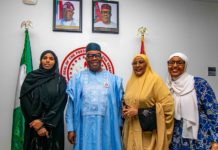The group skilfully uses clan elders to manage and control local populations, collect taxes, raise armies, and settle disputes. The department that manages the elders is so important that, while it comes under the Wilayat Office (the interior ministry), it is headed by Hussein Ali Fidow, who has a seat on the group’s exclusive Executive Council. AS’s manipulation of the clan system to its advantage has however not resulted in its organisational structure becoming more egalitarian. Still reflecting the clan make-up of the original founders, only a select number of clans are represented in the group’s top leadership. Likewise, some sub-clans dominate entire departments and are perceived by AS defectors to be the ‘owners’ of entire branches of the group.
AS does not treat clans in an equal fashion; for instance, while it forces most clans to pay for the formation of the Islamic Institutes which it uses for recruitment, it has fully paid for the Institute of one clan in Mudug region, the Habargidir/Hawiye. It also conducts fewer Amniyaat (secret police/intelligence) operations in that region. This appears to be a pragmatic approach: AS has a weak presence in that region and is therefore inclined to seek good relations with the locals.
Nevertheless, this has resulted in resentment from AS members from other clans. A former AS district governor in Middle Jubba lamented to Hiraal Institute that the group fills its prisons with members of the Darod clan, describing a secret prison in Kunyabarow that had 16 Darod prisoners out of a total of 19. Another defector who worked in the Amniyaat went on to claim that the group’s intelligence wing had become a Murusade, Habargidir, and Duduble project. This is confirmed by Hiraal‘s database of AS leaders.




